-
Posts
1,629 -
Joined
-
Last visited
-
Days Won
18
Content Type
Profiles
Forums
Events
Store
Downloads
Gallery
Posts posted by Gakusee
-
-
12 minutes ago, Bugyotsuji said:
The paperwork looks legit from that shot, although it was issued only just over three months ago, so fresh as an early morning baguette!
Piers - let me double check please. So,
from the certificate above I can see that it was submitted in the April 2022 shinsa and the certificate itself was issued in December 2022 (14 Dec Reiwa 4).
Am I looking at the wrong photo as I do not think it was issued 3 months ago?-
 1
1
-
-
A value of a certificate issued by a reputable and trusted organisation in principle (without specifying organisations per se) lies in the implied assurance the reader draws that a panel of knowledgeable experts have examined the item. In most cases, these knowledgeable (usually Japanese) experts are much more adept and skilled than us here in the West and reputationally and empirically they are trusted.
If you look at different organisations in Japan, in general they attest slightly different things. But a common denominator seems to be:- the item is authentic
- of a certain (old) age
- worthy of preservation
Therefore to the user, the value lies in the assurance they are not buying eg, a plexiglass armour made yesterday or a gimei sword with blatantly wrong signature or a cast menuki that purports to be Goto yet was made in China.
You will need to undertake a further study of the various certificate issuing authorities and I recommend you visit their websites (both Western branches and HQ Japanese branches) and use something like Google Translate to read what their certification actually means. After the initial take, then you ought to look at what it might mean if the certificate also mentions a signature which is on the certified item:
- does the authority / panel agree with the signature
- does it “authenticate” the signature and accept it or does it not
Etc etc. This is where it becomes much more involved and interesting.
-
 2
2
-
 1
1
-
-
Dear Piers, thank you so much for entertaining us with these exciting stories. I hope your body recovers swiftly and the spirit is already high, I am sure, after the acquisition of these rare guns. Congratulations on pulling off these gems.
I have also noticed some rare swords coming up lately - for sale or also being papered by the NBTHK. I however attribute this, as it is happening inJapan, not to tax reasons or the like, but simply to the ageing or demise of older collectors. Their collections are probably being dispersed by heirs or even the collectors themselves.
-
 3
3
-
-
Somehow some elements of the sword do not seem congruent with Masamune but an in hand inspection is necessary.
-
 1
1
-
-
Who attributed it to Masamune please? Thanks for letting me know.
-
4 hours ago, Apercus said:
Nice to see the photos. The display I saw at the V & A museum was dark and afforded no real view of anything.
However that blade is not on display. It needs to be requested. -
6 hours ago, Bugyotsuji said:
Forgive the chatty nature of this update. Some things need to be written down to get one's head in order.
1. Where is our mentor Stephen? He went lurker for a while and then... silent...(?)
2. This Saturday I am hoping to get the little Nami no Hira back from the Togi-Shi.
3. This Sunday we have the third black powder event of this year up at Susai Castle to the east.
Yesterday I cleaned the guns after Sunday's event and prepared them for this next one, and today I have been doing some running repairs on armo(u)r and guns. Like fishing nets, your equipment on the battlefield needs constant little adjustments or you're in trouble.
For example, my tachi often gets knocked out of the saya by the weight of the pistol holster as I'm performing, and having tried everything I have resorted to tying it shut with string. Looks bad at close quarters, but hanging half out looks a whole lot worse.
Then my matchcord keeps falling out of the serpentine as the hammer falls, causing misfires. Naoe Kanetsugu said around 1600 that you should have a matchcord that fits your gun, not too thin and not too fat. I think my problem is that I cleaned the inside of the serpentine pinch flaps too enthusiastically, leaving them smooth. So, fiendishly clever I know, but I have applied rubberized glue to the inside of the flaps. Cannot be seen, but it increases grip and pinch, reducing the inner diameter of the flaps inner side walls. (Why not squeeze them together slightly? With shinchu you have to be careful bending them or you could easily introduce cracks into the brass.)
4. On Children's Day (5/5) we have a blackpowder event at a big shrine near here. But they have also requested a static display of interesting artefacts, and the son of the city mayor also needs to be dressed up in full armo(u)r, apparently, which means sourcing a complete spare set of everything for him. Ashigaru light armo(u)r won't do. Our organizer is in hospital, so I have a nasty feeling that he is expecting me to arrange all this, on top of getting myself ready to perform. Besides, what theme should this display have? How many other people has he requested artefacts from? Aaaarrrggghhhh................ This will need focus and close cooperation.
Piers, please do share with us videos and share photos of your gunpowder exploits. I really love them! Thanks in advance-
 2
2
-
 2
2
-
-
53 minutes ago, Bruce Pennington said:
How interesting. An appraiser with a kao. Thanks Christian!
Bruce, I recommend you buy the Sesko e-book about the Honami family and read about that tradition of appraising and evaluating Japanese swords. It will help you understand how Japanese swords were viewed not only as weapons (as gunto were) but as spiritual objects, historical objects (the regalia passed down from Japanese deities), repositories of value (swords were given “gold coin” evaluations), elements signifying caste belonging, weapons, prizes and accolades for outstanding military feats of heroism, etc.
-
 2
2
-
-
2 hours ago, stackinnutts said:
Gakusee, any thoughts on it?
Big Jimmy in Antarctica, my name is in my signature:)By the way, why are you asking about that blade and how did you come across it? It is not well publicised or too widely known….
It is a very good Soshu den sword with very interesting activities and promise. It could be a Shizu or something of that ilk or even Masamune depending on polish.
It bears a Kojo (one of most reputed Honami judges) kinzogan, but that kinzogan is a bit different from the typical Kojo kinzogan. To paraphrase Tanobe sensei, “it needs further study”. As far as I know, the sword has not been to Japan for shinsa.
From our old records:
Nagasa: 72.0 cm Moto-haba: 3.1 cm Saki-haba: 2.0 cm
Sugata: Hon-zukuri, a graceful tori-zori, chu-kissaki, mitsu-mune.
Jihada: A prominent and flowing itame-hada with mokume and abundant ji-nie forming chikei.
Hamon: Fine nie-deki, notare-midare with some gunome like inclusions, profuse sunagaeshi which spills over
into the ji in places and kinsuji. The boshi is slightly midare-komi with very little kaeri.
Horimono: A bo-hi on both sides that finishes in the nakago between the two mekugi-ana.
Nakago: Suriage by probably 3 or 4 cm and machi-okuri, 2 mekugi-ana. Kiri-jiri, faint kiri yasurime are just
visible and the bo-hi finishes in a pointed end. There is kin-zogan mei on the sashi-omote MASAMUNE and on the sashi-ura HON-A with kao [KOJO].
This sword has a robust sugata that retains its elegance in spite of the suriage. Both the hamon and the jihada reflect the nie dominant hataraki, which together with the large itame- mokume- hada and mitsu- mune, associate the sword with old Soshu- den. The shape is both graceful and strong whilst the bo- hi provide the
sword with a balance that makes it very easy to handle. It is in fine condition and all details are easy to see.
Previously it was the property of Alfred Dobree, an active collector in the early 20th century, who donated it to the Victoria & Albert Museum in London.
-
 8
8
-
-
1 hour ago, lonely panet said:
Paul Martin us to work at the V&A i think. He cound know
No, he did not. He worked at the BM
-
Several of us have seen it
-
Luc, I tried to log in to the JAS forum using my credentials in the new pop-up box. I hope that is not some spoof as I input my actual log-ins
-
3 hours ago, Curran said:
Like many things these days, there is a bit of Shrink-flation at the NBTHK.
Ideally, limiting the number means a bit return to more knowledgeable response of shinsa of years past.
Realistically, it is just another hurdle.
My opinion of NBTHK papers has slid the past decade. Now I check the dates of the papers and handicap the opinion.
True story:
[1] a very good condition iron tsuba that I thought was nidai Kanshiro. Off to NBTHK shinsa and the results are "Higo". Well, that is useless. As a friend said, "Use if to line a bird cage or the bottom of a cat box?"
[2] I sold the tsuba. New owner put it through NTHK-NPO shinsa. They bounced it as "modern". Buyer asked me what I wanted to do? I said. "oh, I forgot it had NBTHK Hozon papers. You want them or want to return the tsuba?"
[3] He kept the tsuba and papers. Amidst a divorce, he sold the tsuba. It pops up in Japan with a dealer, with more recent papers NBTHK papers to Kanshiro.
[4] An authority shows it to me and says "shodai Kanshiro"
So, what do I make of all that?
Paper game, even more fiat than most currencies nowadays.
Do I still paper? Kinda, sorta? Is it worth it? No, not really. I get a lot of Horyu on anything big names I send in to the NBTHK. I then have to wait 6 months more and resubmit. So far about a 100% success rate on the second try, but it is a lot of hassle and agent expense to have to submit twice for what should be relatively easy match workmanship and signature to books.
Curran
with all due respect…. Different game between tsuba and swords and also completely different at high sword level.
The kodogu shinsa experts are different from the sword experts and different people do the shinsa.
And also the shinsa panel has been shrinking due to ill health and aging of the judges. We are down to two- three judges (and I heard the third one is unwell too). Hence the limits to submissionsAnd so on and so on.
So, folks, it is easy to criticise. It is not easy to design a sustainable and solid path forward. Not hypothetical, not idealistic (such as feed all certificates in an AI model and let it do the shinsa or out everything in a database for everyone to access on a global basis) but one that would work culturally, socially, morally and economically within Japan and in an old-fashioned body like the NBTHK.
CF the attached photo of the recent 75 anniversary NBTHK symposium that I attended in 2023 and have a look at the NBTHK management (left of the podium) and the members. Draw your own conclusions about age, approach, appropriateness and so on.
-
 2
2
-
 2
2
-
 1
1
-
-
2 hours ago, Matsunoki said:
Michael, just to be clear, are you referring to the tsuba or the swords/blades?
Colin, apologies for being ambiguous: I meant koshirae and tsuba. I also agree with you that we should not argue about aesthetics here or personal tastes as these embody the Meiji era.
-
 1
1
-
-
The pieces are overall better than average.
However, the condition of many was indeed compromised and there were various gimei items. Some of those that attracted very high prices were acquired at Juyo-level (ie mei verified, age verified, top quality and top condition assured) prices, when in fact they were not at that level. A couple of gems went unnoticed or went at reasonable prices.
-
 1
1
-
 1
1
-
-
Well, I know those who visited from NKBKHK enjoyed it. Unfortunately my schedule could not coincide with the NKBKHK trip.
-
 1
1
-
-
43 minutes ago, Bugyotsuji said:
Token (Eastern Construction 東建コーポレーション Corporation)in Nagoya have created a museum using world-play on To-ken, for blades = 刀剣, called Touken World. 刀剣・日本刀の専門サイト「刀剣ワールド」 (touken-world.jp)
This website seems to have been designed to come up with searches from almost any angle.
Originally they bought up Nihonto blades from everywhere, and then suits of armo(u)r, with seemingly very deep pockets, for a pretty comprehensive collection, but after some time they decided to devote an extra floor to the history of Japanese guns. A little birdie whispers that it will be the largest number on display in Japan, featuring around 350 old Japanese guns of all types.
After several postponements, the museum is now supposed to open officially on 1st May 2024.
Anyway, just a heads-up.
PS I suspect, but have no proof yet, that a couple of my own guns may have eventually ended up there... something to look out for!

Thanks Piers.
I will not hold too much hope regarding the timeline. They promised an opening last autumn. After 2-3 delays.
Informally, they have been showing people around the museum and holding private viewings.
Do you know what is delaying the public opening - is it some health & safety or some other regulations in relation to the exhibits (eg how Kokuho / JuBun etc are shown)
-
 1
1
-
-
The reason is that they have business limits (in particular bottom thresholds) which they must meet if they are to register certain items and also to run certain auctions. So, often they tend to group items to meet these internal thresholds. Also there are thresholds which apply to the overall value / expectation for the auction as a whole (and there is a minimum there too).
Finally, they make a judgement on what is a more desirable item and what is a less desirable item. If these two belong to the same collector, they might recommend to the seller to group the least desirable items with 1-2 more attractive items so that they are not left with unsold stock, relying on exactly what the original poster is complaining about - having to buy the whole lot.-
 3
3
-
-
I would add Chappelear’s intro and overview book - to me it is still a great reference about schools and mei.
The Stibert Museum catalogue is both a catalogue of 100 or so great items but also overview of the main schools and the items are grouped according to these schools - for me (a katchu beginner), this is also a helpful book. Albeit more visual, there are nice descriptions.
I wish Markus did an English version of his German publication but he is too busy…
-
 1
1
-
-
Have you consulted Markus Sesko’s book on swordsmiths? Best to go on his website and purchase the electronic copy if you have not got it.
I personally prefer Markus’s anthology to Hawley but people often refer to Hawley too. -
Thanks Piers. I have seen it occasionally in machine translations but did not expect it would make it to the official poster. Anyway, it sounds like a great event to attend locally.
-
I am sure it will be a very good event and good luck to the exhibitors for a fruitful outcome. Wish I could attend.
Bob, just one question: what is “orthosis” in this context? Sounds like machine translation.
-
21 hours ago, Ed said:
I recently saw the Kuniyoshi known as the "Nakigitsune" or Howling/crying fox. The BMFA shows a nagasa of 21.25", clearly wakizashi length.
Yet, the card at the Tokyo National Museum calls it a katana, though here katana may be used generically for sword. Additionally the Boston catalog refers to it as "Crying" fox. TNM labels it as "Howling" Fox.
It is this type of a lack of continuity which adds to confusion.
The Crying Fox Awataguchi Kuniyoshi uchigatana (epitome of that term) is a beautiful sword. I would say, even mesmerising. Note that it is much earlier than the typical 50-65cm single-use Muromachi swords.
-
 3
3
-
-
25 minutes ago, Mark S. said:
NOW… Juyo and above DO start to consider where a blade/smith/school fall within the ‘grand scheme, world, and history’ of Nihonto and is now a competition between ALL other blades/smiths/schools both at the time of submission (what is sitting in front of the judges at that moment in time) and also much more ‘globally’ of what the NBTHK considers ‘best’ in the history of Nihonto.
…. And additionally: also specifically competition within the blades forged by the very smith whose blade has been submitted to Juyo and above. But I think you are capturing that element by referring to the “grand scheme” of Nihonto.
-
 2
2
-




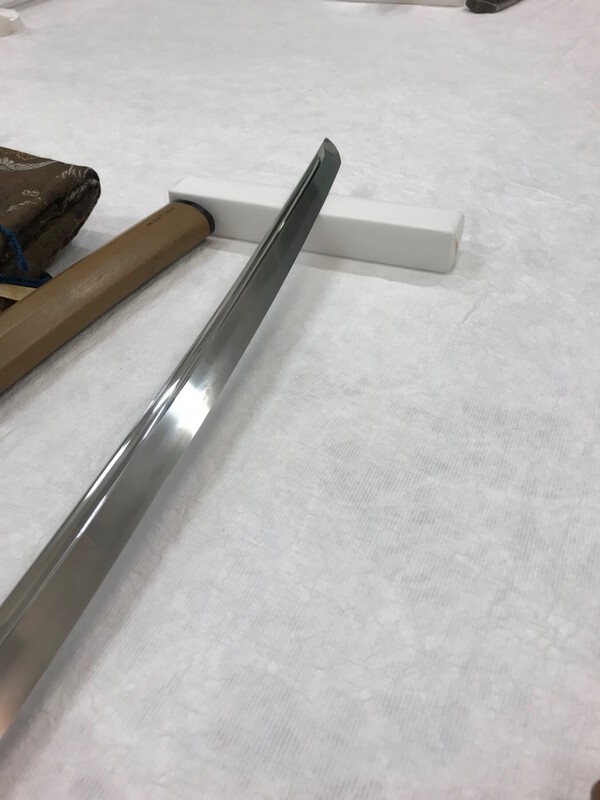
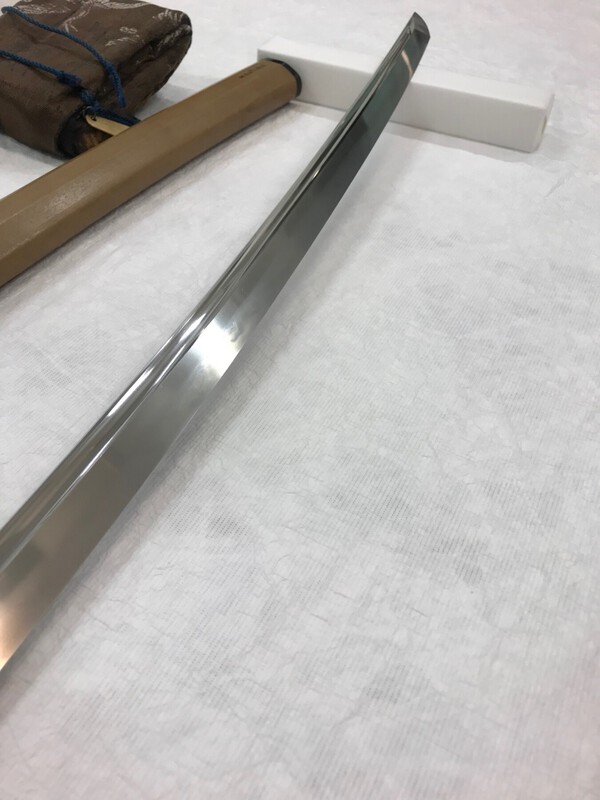
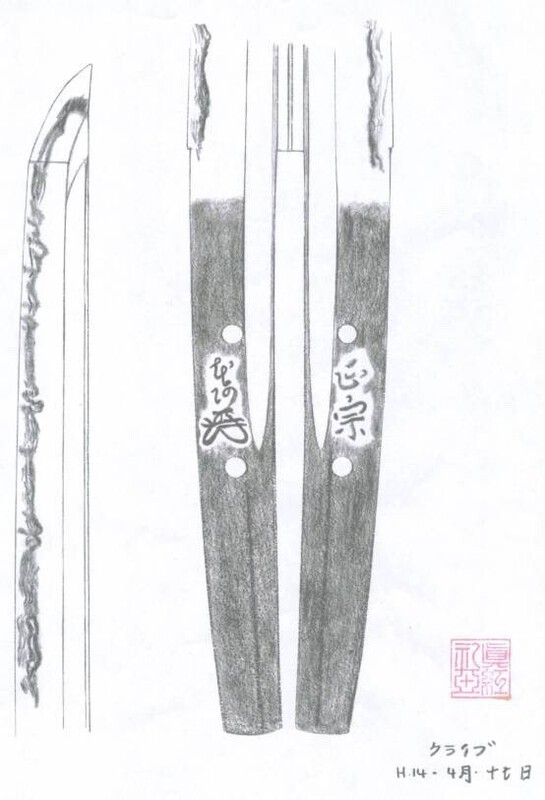
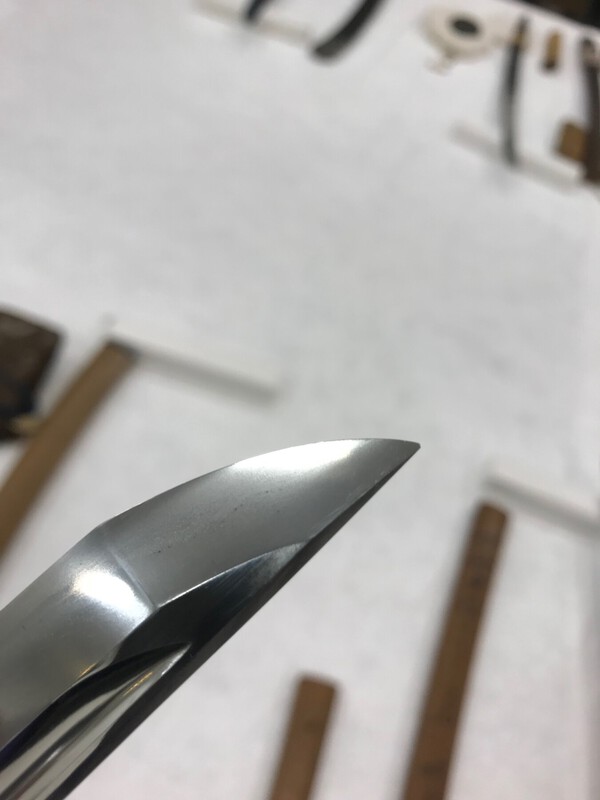
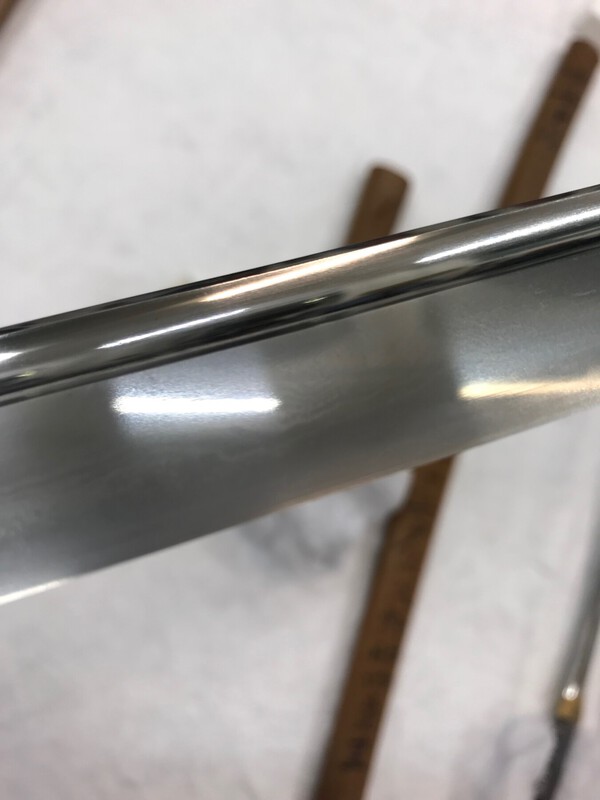


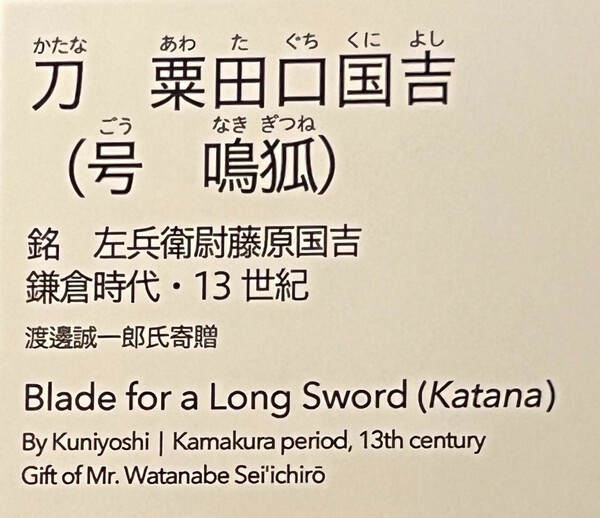
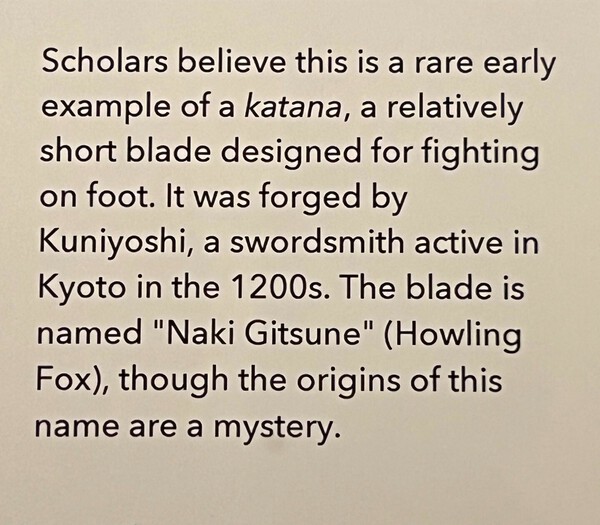
Authenticity check
in Nihonto
Posted
Moriyama san, yes, thanks, but actually the year is already specified as 2022 in the middle of the number (04202209)? Is this not a repetition?
What you say makes sense and also it indeed takes around 3 months for certificate issuance (submit in September and get the paper in December 2022).